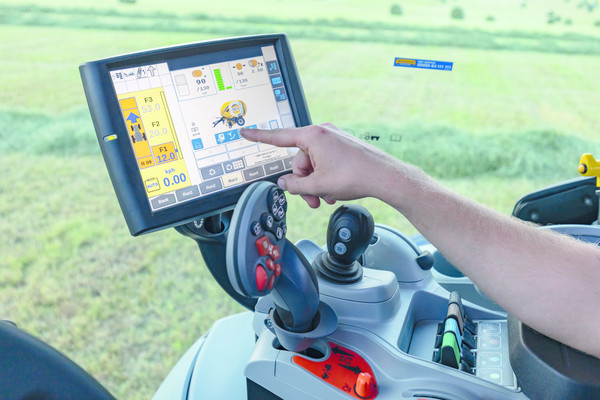
Agriculture 4.0, continues to grow
The estimates of the Smart Agrifood Observatory presented at EIMA International. Agriculture 4.0 in Italy is worth 1.6 billion in turnover and covers 6% of cultivated agricultural land. Digital in agriculture is also at the centre of other informative and in-depth events
The rapid progress of Agriculture 4.0 continues unabated. Growing interest, a multiplicity of innovations and increased confidence in digital technology are driving farms and equipment suppliers towards new solutions. EIMA International highlights the trend with a multiplicity of innovations in the halls and with initiatives describing the phenomenon.
The situation was assessed by the workshop 'Agriculture... more and more 4.0: challenges and opportunities for Italian agricultural and livestock production' in which the Smart Agrifood Observatory presented the latest data on the sector. "The growth of agriculture 4.0," stressed Andrea Bacchetti, director of the Observatory, "is evident and ongoing. In five years, the turnover in Italy has increased more than tenfold from about 100 million in 2017 to 1.6 billion in 2021, with an increase of 23% in the last year alone. This is a significant figure that goes hand in hand with the increase in the area covered by Agriculture 4.0. In 2016, the Ministry of Agriculture had declared the goal of achieving precision management on 10% of the surfaces by 2021. We didn't get there, in 2019 we were still below 1 per cent, in 2020 it was between 3 and 4 per cent, and in 2021 we estimate to be around 6 per cent, which shows the trend and the acceleration in growth. In these 1.6 billion euros, the lion's share is accounted for by agriculture 4.0-related machinery (47 per cent of the total) and systems for controlling vehicles and equipment (35 per cent), although good growth is recorded by decision support systems. In addition to monitoring the general trend of Agriculture 4.0, the Smart Agrifood Observatory probes the behaviour of farms with an ad hoc questionnaire, which over the past year has produced feedback from almost 900 companies representing the national agricultural system. "Well," continues Bacchetti, "64% of these declared that they were adopting at least one of the solutions included in Agriculture 4.0 (precision irrigation, data control and monitoring, remote control, decision support systems) and 40% two solutions, with a growth of 15% in the last year. A striking fact in this field is the almost total absence of drones and also the limited use of robots, which could be the frontier of Agriculture 5.0".
A final statistic, significant for a different attitude of farms, regards the benefits expected from Agriculture 4.0. "We expected that at the top of the list of farms' needs," Bacchetti concludes, "we would find cost reduction, but instead the farmers who activated these solutions put first the reduction of technical inputs and water savings, and then the improvement of soil quality and the end product, less water and air pollution. In addition to the Observatory's data, several meetings on 4.0 issues took place during EIMA. From 'The role of agricultural machinery for the digital transformation of the agro-food industry' in which Pfn, Xfarm, Alpego, Caffini, Dcm and Mascar proposed their digital solutions, to 'From perception to action: robotics, Ai and their impact on safety', in which Matteo Matteucci (Milan Polytechnic), Matteo Fabbri (Unimore) and Massimiliano Ruggeri (CNR) discussed another of the new problems of innovative technologies: that of machine control and user safety.








